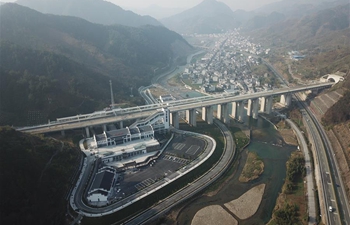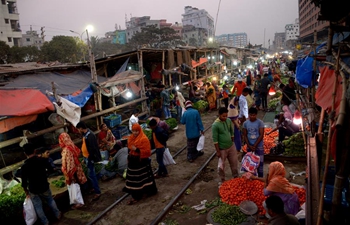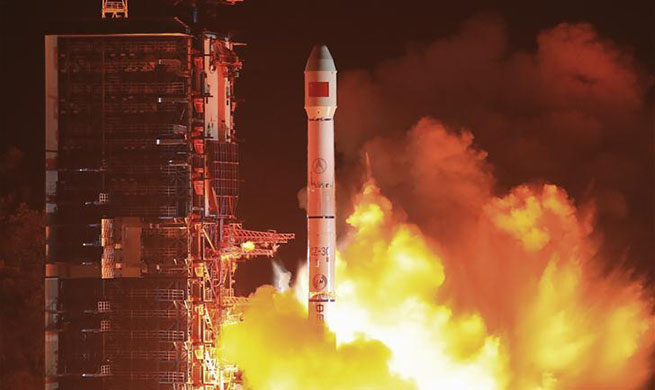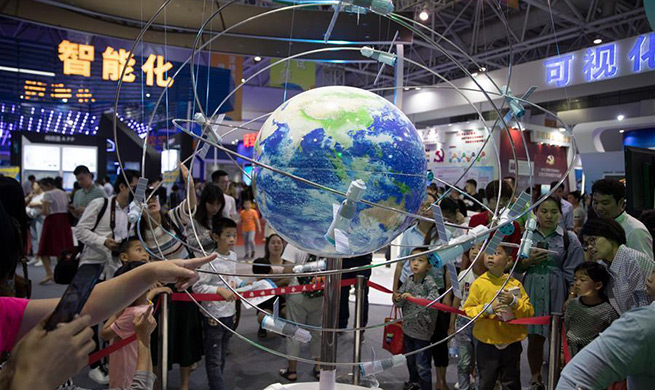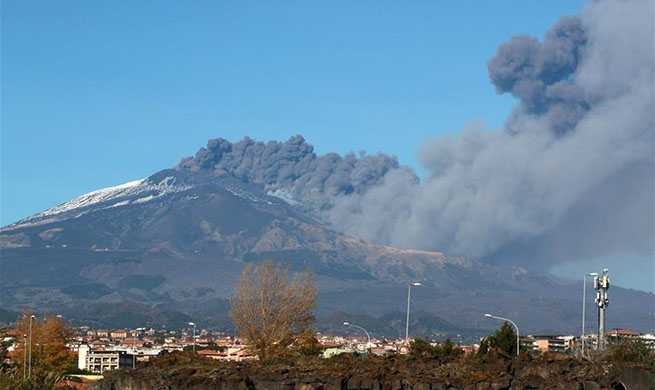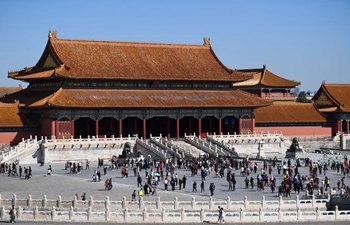by Xinhua writer Zhao Qing
HONG KONG, Dec. 25 (Xinhua) -- In turbulent 2018 when the world was undergoing rapid changes and the existing international order facing challenges, leaders of the Association of Southeast Asian Nations (ASEAN) held fast to rules-based multilateralism system and pressed ahead with ASEAN internal integration as well as forging closer links with the world.
Under the theme of "Resilient and Innovative", ASEAN nations scored major achievements in economic development and community building while continuing to play a central role in promoting international cooperation under its various partnership frameworks with other countries and regional organizations.
MORE INTEGRATED ASEAN COMMUNITY, FREER TRADE LINKS
During 2018 ASEAN countries made significant progress in building an integrated, well connected, innovative and resilient community, by fully implementing major initiatives under the ASEAN Community Vision 2025, the Master Plan on ASEAN Connectivity (MPAC) 2025, the "Initiative for ASEAN Integration", among others, according to the chairman's statement of the 33rd ASEAN Summit held in Singapore in November.
Great efforts were also made in enhancing policy coherence, efficiency and coordination across the three ASEAN Community Pillars, namely the ASEAN Political-Security Community, the ASEAN Economic Community and the ASEAN Socio-Cultural Community, with achievements in all three pillars, especially in economic integration.
ASEAN made great progress in realising the five economic thrusts identified by rotating chair Singapore for 2018, namely: promoting innovation and e-commerce; improving trade facilitation; deepening services and investment integration; cultivating a conducive regulatory environment; and progressing ASEAN's external relations.
Since early this year ASEAN has intensified efforts to advance its trade facilitation and virtually all of intra-ASEAN tariffs have been eliminated by the end of the year, ASEAN Secretary General told Xinhua in an interview ahead of the November summit.
Since January the ASEAN Single Window (ASW) has been in live operation in five ASEAN member states with which preferential tariff duty can be granted through the exchange of electronic data (e-ATIGA Form D) and received electronically through the ASW gateway. ASEAN is also finalizing an "ASEAN Trade in Services Agreement, he said.
ASEAN attained a combined GDP of 2.8 trillion US dollars in 2017, a 5.3 percent growth year-on-year, up from 4.8 percent in 2016. Growth is expected to remain stable at 5.1 percent and 5.2 percent in 2018 and 2019, respectively.
ASEAN's total merchandise trade reached 2.57 trillion US dollars in 2017, of which 22.9 percent was intra-ASEAN; and ASEAN's total services trade reached 695.2 billion U.S. dollars in 2017, of which 16.7 percent was intra-ASEAN, according to the chairman's statement of the 33rd ASEAN Summit.
On investment, inflows of foreign direct investment (FDI) to ASEAN reached 137 billion U.S. dollars in 2017, of which 19.4 percent was intra-ASEAN.
At the 33rd summit in November, leaders reaffirmed their resolve to continue advancing the ASEAN Economic Community agenda to bolster regional economic resilience against external shocks, and towards targets such as the doubling of intra-ASEAN trade by 2025.
TAPPING DIGITAL TECHNOLOGY, BUILDING SMART CITIES NETWORK
At the November summit, ASEAN economic ministers signed the ASEAN Agreement on Electronic Commerce, which would facilitate cross-border ecommerce transactions and promote confidence in the use of e-commerce in the region to drive economic growth and social development.
An initiative to develop the ASEAN Digital Integration Framework was also launched during the summit, which identifies the economic benefits of, and current challenges to digital integration for ASEAN and for its member states.
At the summit, ASEAN Secretariat also assessed ASEAN's Readiness for the Fourth Industrial Revolution, and tasked officials to strengthen cross-pillar and cross-sectoral coordination in this area.
As one notable achievement in leveraging on innovation and technology, ASEAN countries agreed to establish an ASEAN Smart Cities Network (ASCN), linking 26 pilot cities.
Cities in the network would synergise development efforts, share best practices, and catalyse more opportunities for growth, innovation, capacity-building and sustainable development.
The network will focus on people-oriented, people-centred solutions and liveability, and also contribute to enhancing mutual understanding across cultures.
Ultimately, the ASCN will contribute to realising a "politically cohesive, economically integrated, and socially responsible" community in line with the ASEAN Community Vision 2025, according to the agreement.
STICKING TO MULTILATERALISM, DEEPENING LINKS WITH WORLD
Upholding multilateralism has been the focal point of ASEAN leaders during the year, as the principle of multilateral cooperation and integration lays the very foundation of this regional bloc.
"We reaffirmed our strong commitment to multilateralism and international cooperation, and remained steadfast in upholding the open and rules-based multilateral trading system, which has underpinned the region's economic growth over the past decades," reads the chairman's statement of the 33rd ASEAN summit in November in Singapore.
Under the initiative of ASEAN, negotiations on the Regional Comprehensive Economic Partnership (RCEP) have made substantial progress this year and are poised for conclusion in 2019, Singaporean Prime Minister Lee Hsien Loong announced at the second RCEP summit on the sidelines of the 33rd ASEAN summit.
The RCEP, a proposed free trade agreement (FTA) between the 10 ASEAN member states and six of their FTA partners -- China, Japan, South Korea, Australia, New Zealand and India, is expected to become one of the world's largest trading blocs, accounting for 45 percent of the world's population, 40 percent of global trade and one third of the world's GDP.
The conclusion of the RCEP will send a clear and strong signal about commitment to multilateral trade, which is urgently needed amid the rising anti-globalization sentiment, Lee said.
At the same time, ASEAN tightened ties with its external partners, including the worlds major powers and international organizations.
Marking the 15th anniversary of the China-ASEAN strategic partnership, the two sides adopted the China-ASEAN Strategic Partnership Vision 2030, mapping out blueprint for deeper cooperation in the future.


